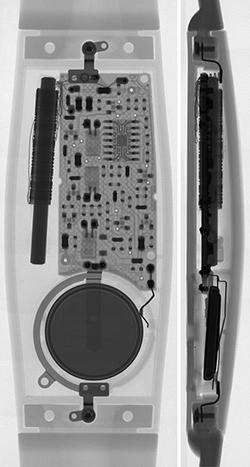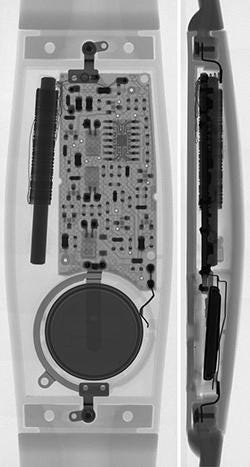How Engineers Are Dealing with Challenges of Optical Heart Rate Monitoring 29923
August 18, 2016

(This is the second of two blogs about the use of optical techniques for measuring heart rates in fitness devices. Read part one here.)
Five years ago, optical heart rate tracking seemed like an obvious successor to the popular chest straps used by many fitness buffs, but the technology has faced myriad engineering challenges on its way to market acceptance.
Unlike the venerable chest strap, optical heart monitors need to employ two power-hungry LEDs. They use a small form factor, with little room for a battery. They incorporate a DSP for number-crunching. And they face signal processing challenges caused by noise, sensor location, biomechanics, skin tone, and even the presence of tattoos.

And while wristband-based monitors offer a clear convenience advantage over the tight-fitting chest straps, engineers acknowledge that chest straps have their own inherent engineering edge. "An EKG strap is up against your chest," Shelten Yuen, vice president of research for FitBit Inc., told Design News. "It's very close to your heart, which makes the sensing problem a little easier."
Indeed, the chest strap uses the time-honored methodology of the electrocardiogram (EKG), which measures tiny electrical signals on the skin, just inches in front of the heart.
In contrast, optical heart rate monitors reside on the wrist, a comparatively long distance from the heart. They work by shining infrared light through the skin to the capillaries below. Reflected light is picked up by the optical sensor and signals are processed by the onboard DSP. Although the technique has been used in hospital pulse oximeters for many years, it has enjoyed less time in medical applications, and in the consumer space, than the EKG.
 Medical Product Development. Advanced electronics such as optical sensors are playing a greater role in healthcare than ever before. Learn what is happening now and what to expect for the future in the "Medical: Achieving Product Development Goals With Sensors and Data Management" track at Medical Design & Manufacturing. Sept. 21-22, 2016 in Minneapolis. Register here for the event, hosted by Design News’ parent company UBM.
Medical Product Development. Advanced electronics such as optical sensors are playing a greater role in healthcare than ever before. Learn what is happening now and what to expect for the future in the "Medical: Achieving Product Development Goals With Sensors and Data Management" track at Medical Design & Manufacturing. Sept. 21-22, 2016 in Minneapolis. Register here for the event, hosted by Design News’ parent company UBM.
Consumer evaluations of the new technology have been mixed. One user group has filed a class-action lawsuit, alleging FitBit's optical technique is inaccurate. And some users have complained that their optical sensor-based products don't work properly during intense exercise.
Design engineers who have incorporated the optical technique in their products describe the technology as a challenge, but one that can be met. "The optical heart rate measurement technology is challenging for a number of reasons," said Andy Grunes, a consulting engineer for Aavid Corp. who has contributed to the design of a head-mounted heart rate monitor for swimmers. "First, the specific artery location can differ between people, which makes positioning critical and variable between subjects. Second, in some locations on the body, the blood flow can be tiny and requires amplification, which can create a lot of noise in the signal from the sensor, leading to inaccurate heart rate determination. Third, if water, sweat, or other interference goes over the sensor or if light bypasses the artery to get to the sensor, it impacts the heart rate reading..."
"I've been developing mechanical products for 15 years and this is probably the most challenging one I've ever worked on," Grunes told Design News last year.
The challenges have been substantial enough to motivate manufacturers to hire the best technical talent available. When three FitBit engineers talked to us recently, two had PhD's in electrical engineering -- one from Harvard and another from University of California-Berkeley. A third was a former professor specializing in biomechanics at the University of Michigan.
By most accounts, the challenges haven't short-circuited the success of product engineering teams. Fitness trackers from FitBit, Mio Global, Garmin Ltd., and other manufacturers are growing in popularity.
The one notable problem area of the optical technique may lie in its biomechanics, in some limited cases. Certain "short-burst" sports, such as tennis and boxing, can create accuracy issues, according to engineers.
"When you look at the form factor, there are going to be situations that will be quite challenging because of the biomechanics," Yuen said. "We're pretty forthcoming about that."
In contrast, rhythmic activities, such as walking, running, and cycling have reportedly caused few issues, engineers say.
Most engineers consider optical heart rate tracking to still be in its youth. Like so many technologies -- from personal computing to global positioning systems -- optical heart rate tracking will evolve, they say. "We work on improving the mechanics, so it fits better on the arm, and you get a better signal," noted Subbu Venkatraman, an electrical engineer who has worked on FitBit activity trackers. "We work to improve the electronics, so you have lower power. And we work to improve algorithms, so you get a better estimate of the heart rate. We work on all these aspects, and I believe there are still improvements to be had in all three areas."
READ RELATED ARTICLES ON DESIGN NEWS:
Senior technical editor Chuck Murray has been writing about technology for 32 years. He joined Design News in 1987, and has covered electronics, automation, fluid power, and autos.
About the Author(s)
You May Also Like



